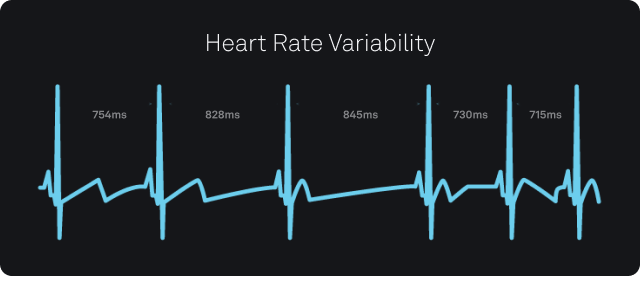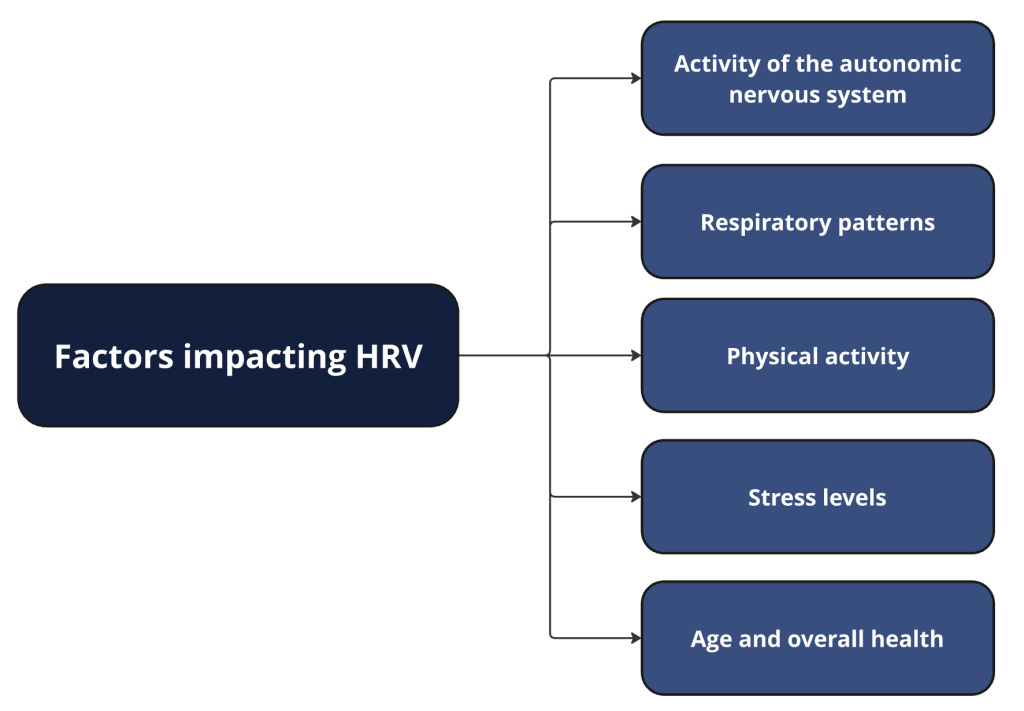Author

Full name
Job title, Company name


Before we dive into specific metrics, let’s first define what HRV is. Contrary to popular belief, a healthy heart does not beat like a metronome. In fact, there are small variances in the time between each heartbeat, with this variance being what is called Heart Rate Variability. HRV depends on numerous factors:
A high HRV generally indicates good cardiovascular fitness and a responsive autonomic nervous system.

SDNN is one of the most straightforward time-domain measures of HRV. Here’s what you need to know:
RMSSD is another time-domain measure of HRV, but it focuses on short-term variations. Let’s break it down:
While both SDNN and RMSSD are time-domain measures of HRV, they provide different insights:
Understanding SDNN and RMSSD can provide valuable insights into your cardiovascular health and autonomic nervous system function:
SDNN and RMSSD are powerful tools for assessing heart rate variability, each offering unique insights into cardiovascular health and autonomic function. While SDNN provides a broader picture of overall variability, RMSSD zeros in on short-term fluctuations and parasympathetic activity.
As with any health metric, it’s essential to consider SDNN and RMSSD in context, alongside other health indicators and under the guidance of a healthcare professional. Remember, these metrics are just pieces of the larger puzzle that is your overall health and well-being.
Heart Rate Variability (HRV) refers to the small variances in time between each heartbeat. Contrary to popular belief, a healthy heart doesn't beat like a metronome - these natural variations actually indicate good cardiovascular fitness and a responsive autonomic nervous system. A completely steady heartbeat would actually suggest poor health.
SDNN (Standard Deviation of NN Intervals) measures overall HRV by calculating the standard deviation of time between normal heartbeats, reflecting both short-term and long-term variability. RMSSD (Root Mean Square of Successive Differences) focuses specifically on short-term variations between consecutive heartbeats, primarily reflecting parasympathetic nervous system activity.
SDNN is typically measured over 24 hours for the most comprehensive assessment, though shorter periods can be used. RMSSD is more flexible and can be reliably measured in recordings as short as 10 seconds, making it ideal for quick assessments and real-time monitoring applications.
For healthy adults, normal SDNN values for a 24-hour period range from 141 ± 39 ms. Normal RMSSD values typically range from 27 to 72 ms. However, these values can vary based on age, fitness level, and individual factors, so it's important to track personal trends over time.
HRV is affected by multiple factors including autonomic nervous system activity, respiratory patterns, physical activity levels, stress levels, age, and overall health status. Understanding these influences helps interpret HRV readings more accurately and identify patterns in your health data.
Athletes often use these metrics to gauge recovery status and prevent overtraining. Lower values in both metrics may indicate higher stress levels or incomplete recovery, while improving values can suggest better fitness and recovery. RMSSD is particularly useful for daily monitoring due to its short measurement requirements.
Both SDNN and RMSSD have been associated with various health outcomes, including cardiovascular disease risk. They can provide insights into autonomic nervous system function and stress levels. However, these metrics should always be considered alongside other health indicators and interpreted with guidance from healthcare professionals as part of a comprehensive health assessment.